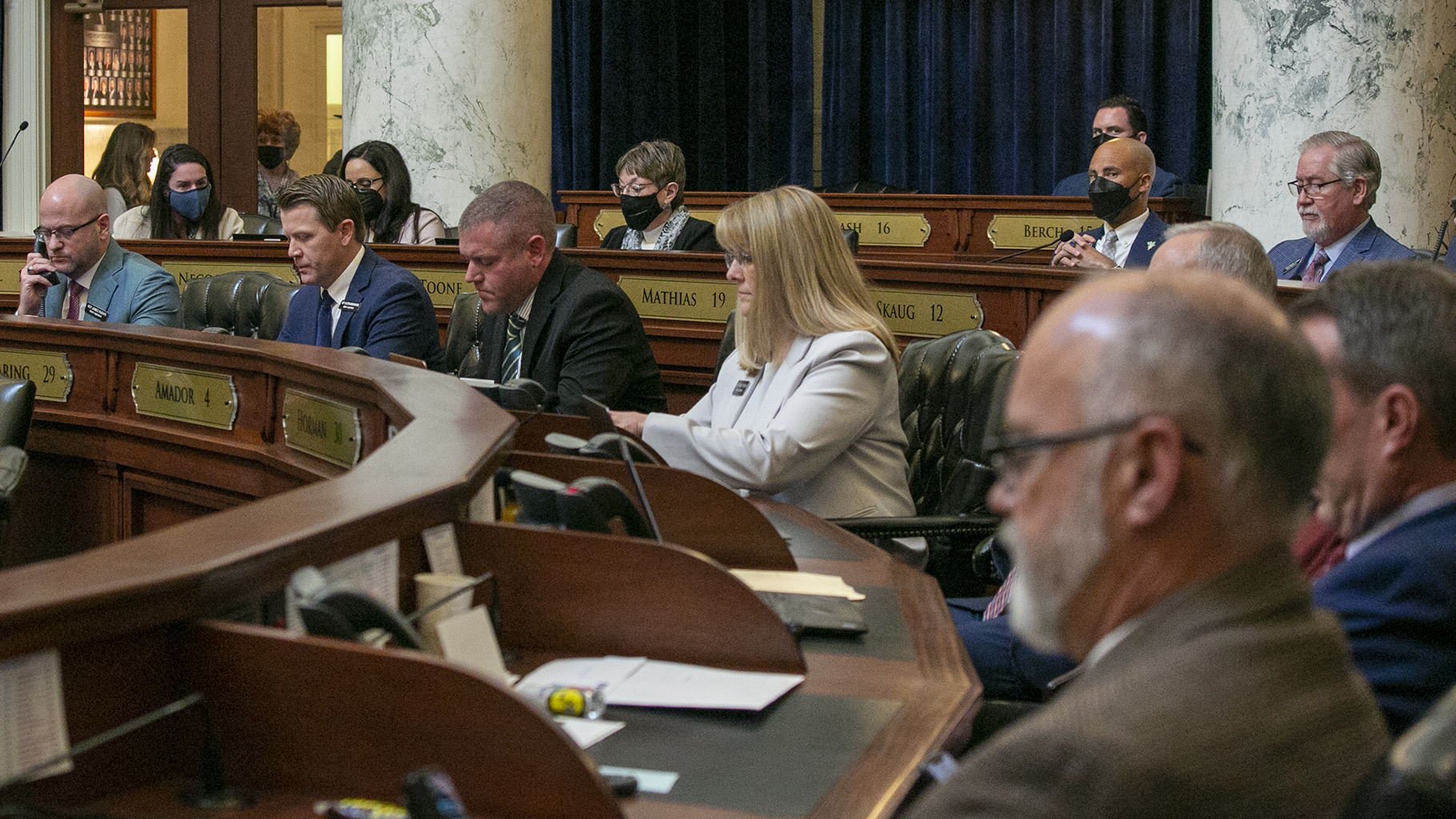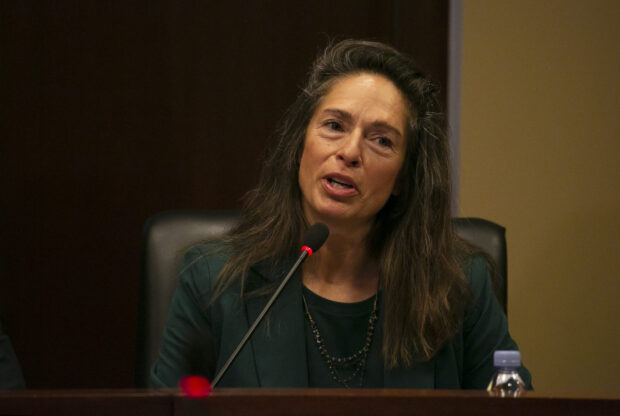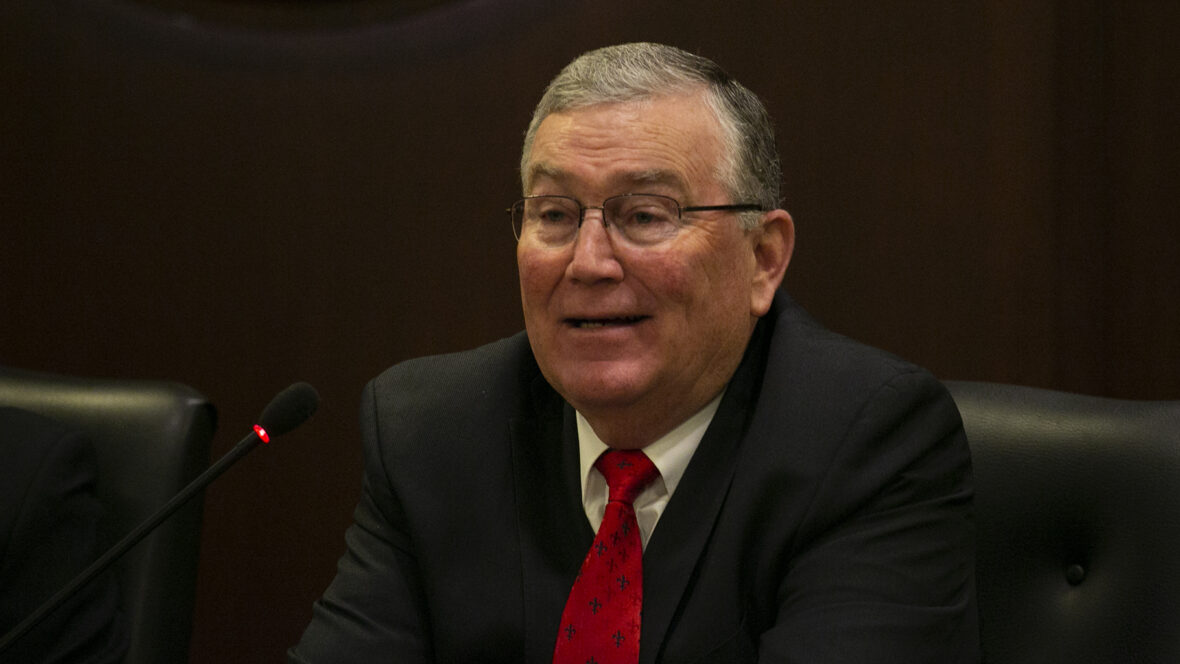
Gov. Brad Little’s State of the State address came in at 3,058 words.
Omicron wasn’t one of them.
Now, “education” got 11 mentions. “Taxes” got nine. “Biden” got six — or eight, if you throw in Little’s references to “Bidenflation.”
But there was no room in the governor’s word cloud for the new and highly contagious variant of the coronavirus, which is racing across the nation and rifling through Idaho. On Monday, Little spoke of coronavirus in the past tense, with one exception. “Our lawsuits challenging Biden’s polarizing vaccine mandates are working.”
It’s as if omicron never existed. And in the Statehouse, it’s as if it doesn’t.
We’ve been here before, of course. In March 2020, as Idaho reported its first case of the coronavirus, lawmakers worked to adjourn with little sense of urgency, and didn’t let the looming pandemic stand in the way of an end-of-session party at the Basque Center. While much of the world worked remotely in 2021, the Legislature met in person — but in March, after six House members tested positive, lawmakers were forced to take an 18-day recess.
Wednesday, Day Three of the 2022 legislative session, was Day One of the omicron legislative session.
When the House convened for its brief and procedural late-morning floor session, barely a dozen of the 70 lawmakers wore masks. One was Rep. John Gannon, D-Boise.
By late afternoon, Gannon and a second Boise Democrat, Sen. Janie Ward-Engelking, had tested positive for COVID-19. Both lawmakers were vaccinated and boosted, and neither lawmaker had exhibited symptoms, Democratic caucus spokesperson Olivia Heersink told the Idaho Capital Sun.
Of course, these are the session’s two known coronavirus cases, when testing is optional. But what is also known is that the Statehouse offers fertile habitat to a virus. Lawmakers and staff, lobbyists and citizens and reporters work and interact in close proximity. Then, each weekend, lawmakers commute back to their home districts, providing onramps to a coronavirus variant that already has its foot on the gas pedal.

“This beast is as transmissible as measles, which is one of the most transmissible viruses known,” said Rep. Fred Wood, R-Burley, a physician who chairs the House Health and Welfare Committee.
Consequently, Wood was not surprised by Wednesday’s Statehouse cases. “The wave is going to go through the Legislature just like it does anywhere else.”
The two confirmed cases in Idaho’s “People’s House” are dwarfed by what is unfolding beyond the rotunda. Idaho reported 2,821 new coronavirus cases Wednesday — shattering, by more than 500 cases, a one-day record set Tuesday. The surge is moving so quickly that the state and its health districts can’t keep score in real time. More than 16,000 other positive test results await review and followup.
Perhaps the surge could prove to be short-lived. On Thursday, the New York Times reported there are signs that omicron might already be peaking in areas such as New York and Washington, D.C., where the variant first arrived. But the West is on the back end of the omicron wave.
“Even if we’re nearing our peak in daily cases, which we might be starting to plateau a little bit, we could start to see the impact of those high infection rates on our hospital capacity within the coming days,” Dr. Kathryn Turner, Idaho’s deputy state epidemiologist, said during a Department of Health and Welfare media briefing Tuesday.
This now-familiar pattern — a case spike that eventually leads to a spike in hospitalizations, and deaths — could come at an inopportune time. Idaho’s hospitals operated for much of the fall under crisis standards of care, an unprecedented designation that could allow hospitals the grim option of rationing care. Health and Welfare Director Dave Jeppesen said he wouldn’t be surprised if the state is forced to go back to crisis standards of care.
“Health care systems are under a tremendous amount of stress right now. And we expect that to get worse before it gets better,” Jeppesen said Tuesday.
In a question-and-answer session with reporters Friday, Little did say omicron was “very concerning.” But a governor’s State of the State, delivered to a broader audience, can be just what the name says: a candid assessment of where things stand.
In his quest to deliver an election-year message — laying out an ambitious plan for a $1.9 billion surplus, recapping his job performance, on COVID-19 and other counts — Little failed to acknowledge reality. Idaho’s omicron situation will get worse before it gets better. In school districts such as Caldwell, which announced a two-day shutdown late Wednesday. On campuses such as Boise State, which reported a one-week spike in cases Friday, even before the start of spring semester. In hospitals — as Jeppesen, Little’s own health and welfare head, said Tuesday.
And yes, probably in the Statehouse too. A building where, basically, the only pandemic protocol is personal choice.

Lawmakers don’t have to test for the virus or report symptoms, as the Capital Sun pointed out Wednesday. Masks are optional and seldom seen — so much so that House State Affairs Committee Chairman Brent Crane started the committee’s first meeting with an appeal to his colleagues. “I don’t want you to give (people) any grief for wearing a mask.”
Lawmakers are left to navigate this latest outbreak as they see fit.
Senate Minority Leader Michelle Stennett got another test Thursday, and it came back negative. The Ketchum Democrat will spend the weekend in Blaine County — home to the highest infection rate in the state — but she plans to do little more than shovel snow and fit in some skate skiing. She hopes the session will continue without interruption, but says, “I couldn’t begin to know how many people in the building are carrying COVID.”

Wood would rather see lawmakers tested twice weekly, and urged to stay home if they develop a headache or other symptoms. At 76 and fully vaccinated, Wood is skipping the extracurriculars this year, the luncheons and dinners, limiting himself to floor sessions and committee meetings. “I don’t much care to be here,” he said, “(but) I’ll be here, mask up good and not go to any unnecessary functions.”
House Speaker Scott Bedke believes almost everyone in the Capitol circle is vaccinated, or carrying some natural immunity from a COVID case, so he’s not sure what more to ask of his colleagues. And he takes his cue from the science, which strongly suggests that the more contagious omicron variant is also milder than its predecessors.
“At this point, I see no reason to stop our process,” Bedke, R-Oakley, said Thursday. “I’ve had people in the medical community tell me the virus will find you.”
This latest surge could flame out quickly. But before then, it seems inevitable that the virus will find more people at “The People’s House.”
Idaho EdNews reporter Kyle Pfannenstiel contributed to this report.
Each week, Kevin Richert writes an analysis on education policy and education politics. Look for his stories each Thursday.
